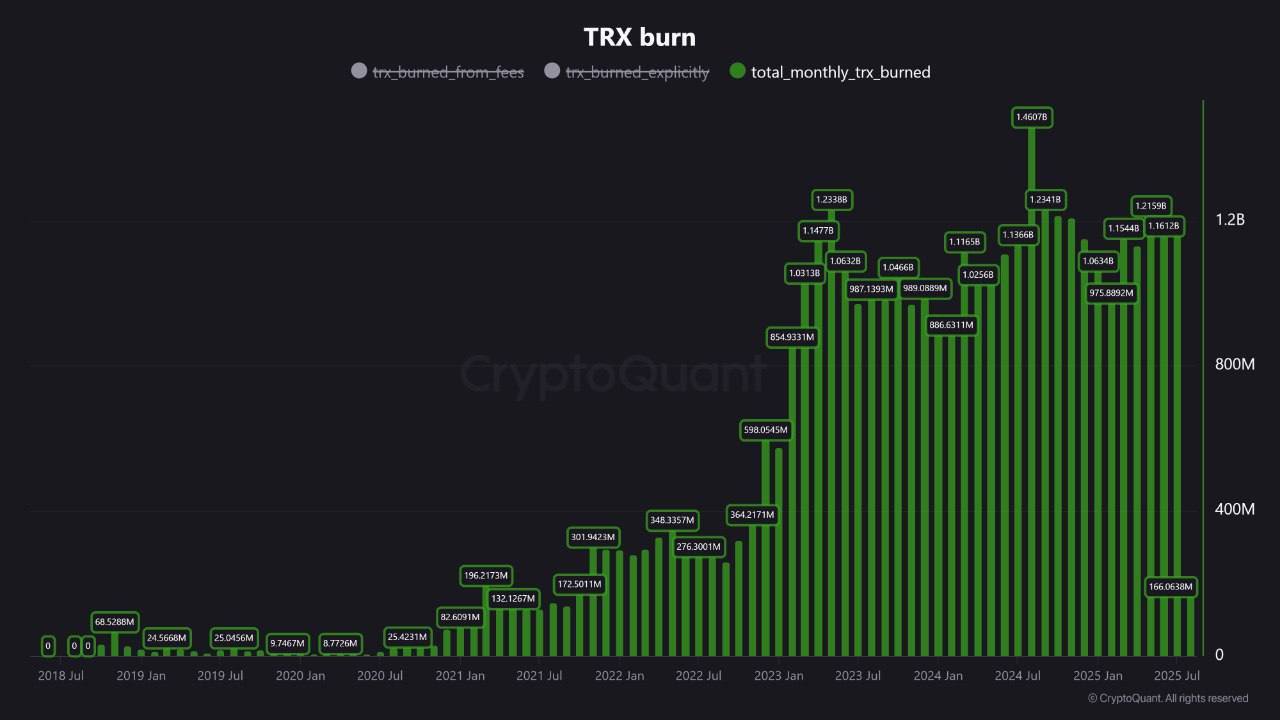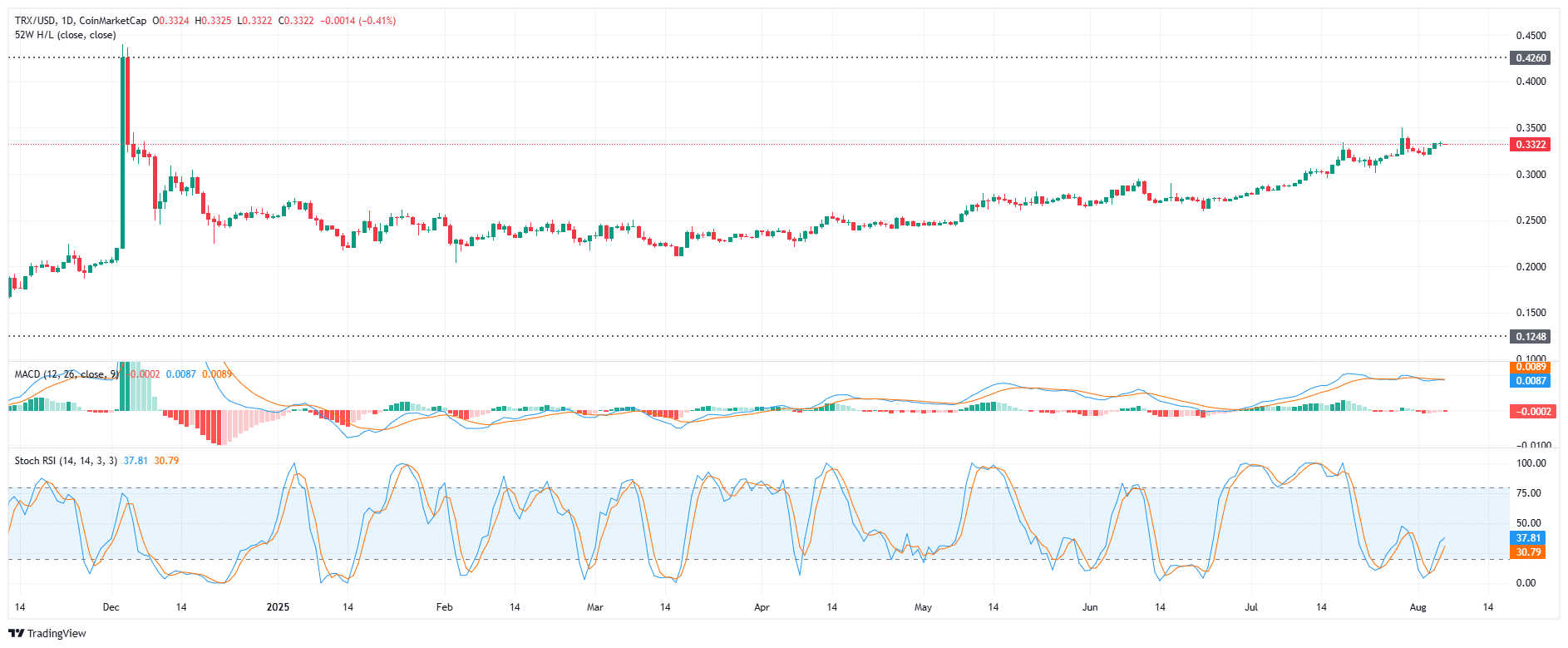Tron (TRX) has achieved record realized gains this year, primarily due to its burn mechanism and stablecoin issuance, although profit-taking may affect its price.
-
TRX’s realized gains have reached record highs, second only to Bitcoin and Ethereum.
-
Profit-taking activities are increasing, potentially leading to a price correction.
-
Tron’s burn mechanism has effectively reduced supply, contributing to its price surge.
Tron (TRX) has recorded significant gains this year, driven by a burn mechanism and stablecoin issuance, but profit-taking could lead to price corrections.
| Cryptocurrency | Realized Gains (24h) | Comparison |
|---|---|---|
| Tron (TRX) | $920M | Second to Bitcoin ($665M) |
What is Tron (TRX) and Why is it Gaining Popularity?
Tron (TRX) is a blockchain-based platform that aims to decentralize the internet. Its recent popularity surge is attributed to a strong burn mechanism that reduces supply, thus increasing demand and price.
How is Tron (TRX) Generating Revenue?
Tron generates revenue primarily through stablecoin issuance, particularly Tether’s USDT, which is predominantly issued on its platform. This has led to substantial annual fees, enhancing its financial ecosystem.
Frequently Asked Questions
What are the realized gains for TRX?
Tron’s realized gains have reached approximately $920 million in the last 24 hours, making it one of the top performers in the crypto market.
How does profit-taking affect TRX’s price?
Profit-taking can lead to short-term price corrections as investors lock in gains, potentially impacting TRX’s upward trajectory.
Key Takeaways
- TRX’s surge since the start of the year was driven by two main factors.: The burn mechanism and stablecoin issuance.
- Profit-taking could impact price negatively.: Increased selling pressure may lead to short-term corrections.
- Tron has maintained a strong trading volume.: Approximately $920 million in daily trading activity.
Conclusion
In summary, Tron (TRX) has achieved remarkable realized gains this year, primarily due to its effective burn mechanism and stablecoin revenue. However, profit-taking activities may pose a risk to its current price momentum. Investors should remain vigilant as market dynamics evolve.
-
Tron (TRX) has maintained a strong trend since the start of the year, leading to record-high realized gains for TRX.
-
At the time of press, TRX had barely moved since the close of the previous day, but it continued to attract significant daily trading volume — about $920 million.
-
Source: Glassnode
With that in mind, what could have led to these gains?
What Fueled These Profits?
The implementation of a burn mechanism to create scarcity seems to have driven the price increase. As of the time of writing, Tron had burned about 40 billion TRX, effectively reducing its supply.
In August alone, Tron removed about 166 million tokens, a tenth of what was burned in July. The Foundation has maintained this steady burn mechanism since the start of 2023.

Source: CryptoQuant
Not only did the surge in price come from burning, but also from fees, as Tron served as a layer for stablecoin issuance. Tether’s USDT, which is mostly issued on Tron and Ethereum, generates about $7.57 billion in annual fees.
Additionally, founder Justin Sun has been instrumental in popularizing the altcoin through collaborations and high-profile promotions.
Impact of Profit-Taking on Price
However, TRX’s price action could be set for a short-term drop following increased profit-taking activity.
TRX has been trading well above its 52-week low and was approaching $0.42, a significant increase from its low of $0.20 in early February.
The MACD indicator is showing signs of a shift in momentum, as the strength has slightly shifted to bearish territory.

Source: TradingView
Fortunately, the Stochastic RSI indicates that sellers may be getting exhausted after a period of locking in gains. The metric is approaching neutral territory, suggesting potential for a price correction before TRX resumes its upward trajectory.
